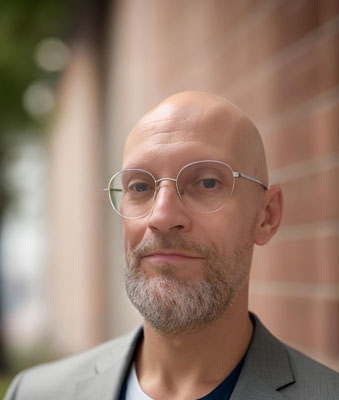CMF@70
Steve Fouch reviews the first 70 years of CMF’s history and what it might tell us about the Fellowship’s future
In the aftermath of the Second World War, Britain was reeling from more than half a decade of conflict. Yet in that time, the nation had learned powerfully about how to pull together and support one another. It was perhaps in a desire to hold on to this spirit of mutual solidarity that the post-war government created the National Health Service (NHS) – the first tax funded, government-run, health service in the world.
Many doctors were returning from military service and dealing with the challenges raised by their wartime experiences and the changed country to which they had returned. The Medical Prayer Union, led by Neville Bradley, felt that Christian doctors needed to be more closely connected for mutual, spiritual support.
At the same time, the medical student membership of the Inter-Varsity Fellowship (the forerunner of today’s Universities and Colleges Christian Fellowship) was growing fast. Under the leadership of William Melville Capper, the need for a dedicated medical section for IVF was widely recognised.
Less than a year after the NHS was formed, in June 1949 these two groups decided to band together to further connect, support and encourage Christian doctors and medical students in their faith. And so was born the Christian Medical Fellowship. The new organisation recognised early on that its members faced not only the challenges and opportunities of the new healthcare system, but also the advent of new medical technologies that raised many novel, ethical and professional questions.
While the late ’40s and early ’50s was an era where Christianity was superficially still at the centre of public life, the reality below the surface was that of a society slowly becoming more secular, leaving behind the Christian underpinnings upon which it had been built. Being a Christian doctor in this environment was already creating new problems that CMF wished to help its members address.
It was in this milieu that Douglas Johnson was appointed as CMF’s first General Secretary.
The evolving ministry of CMF
Over the next few years, many of the features of CMF that most of us will recognise today began to take shape. In 1950, the first weekend National Conference was held in Bournemouth, with a strong emphasis on Bible teaching, fellowship and discussion on topical medical issues.
In 1951, the first CMF publication, The Christian Heritage in Medicine was launched, followed two years later by CMF’s first regular publication, In the Service of Medicine. Douglas Johnson famously said that getting the publications and student ministries right were essential to the growth and long-term viability of the Fellowship. At the same time, he also focussed on getting local fellowship groups formed to connect and support Christian doctors and medical students. The first in a series of breakfasts at BMA and Royal College conferences were held from 1952.
As new medical issues arose, it became increasingly apparent that CMF needed to do some serious thinking to produce well thought through, Christian medical responses. Dr Martin Lloyd Jones came on board to chair a newly formed committee to investigate new medical advances and formulate biblically grounded Christian commentary. This group in time became the Medical Study Group, which continues to this day.
By the ’60s, CMF found it had a growing international family of similar fellowships. In 1964, the first International Congress of Christian Physicians (ICCP) was held in the Netherlands, with CMF as a key participant. CMF continued to provide speakers and send delegates to subsequent ICCPs, even hosting one in Oxford in 1966, until the growing network formed itself into the International Christian Medical and Dental Association (ICMDA) at the 1986 Cancun Congress. (1)
The creation of ICMDA was in turn partially responsible for fuelling CMF’s vision for supporting its own members serving overseas in mission. In 2004, CMF merged with the Medical Missionary Association and began to be even more engaged with mobilising and equipping Christians in all health professions into world mission.
A growing and broadening fellowship
The increasing secularisation and liberalisation of society in the ’60s and ’70s led to a growing focus on student ministry through those decades. It was clear that Christian medical students were dealing with new, more secular and often anti-Christian attitudes in the most acute way, in addition to rapid developments in medical science. In 1971, Nucleus was launched as a new, regular CMF publication for students. In 1973, Peter May was appointed as the first CMF Travelling Medical Secretary for undergraduates.
The following year, after 25 years as General Secretary, Douglas Johnson stepped down and Keith Sanders took over from him. Keith was an energetic, and very peripatetic General Secretary, travelling the length and breadth of the British Isles, talking to members, churches and student bodies. Under Keith’s leadership, the membership tripled to the levels we still see today.
The rate of production of new books, papers and audio resources increased in the ’70s and ’80s, eventually leading to the creation of the CMF website in the late ’90s.
After 16 years of leading CMF, Keith Sanders stepped down in 1990 and Andrew Fergusson took over the reins for the next decade. Andrew brought skills in communications and PR, and a knowledge of bioethics. He also brought in Peter Saunders as his full-time Student Secretary. Andrew and Peter formed a powerful double act that strengthened the student and graduate ministry of CMF. They also brought media awareness and engagement to the Fellowship, speaking out not just to the membership and the church, but to wider society on topical issues.
CMF’s flagship magazine went through several changes of name and format over the years from In the Service of Medicine to the Journal of the Christian Medical Fellowship. Andrew became the first editor of Triple Helix when it was launched in 1997 with the aim of reaching a wider audience. Today more than 4,000 copies go out to more than 68 countries around the world, with an equally large readership for the online magazine, which is widely shared on social media. (2)
When Andrew stepped down in 1999, Peter took over the leadership of CMF for the next 19 years of CMF’s life, further extending the media and public policy profile of the Fellowship. CMF also developed a much bigger staff team, bought its own building in south London (named Johnson House after CMF’s first General Secretary and his son, Alan Johnson who was the Chair of CMF’s Board in the early Noughties). CMF also broadened its global ministry still further, becoming more proactive and multidisciplinary in mission resourcing and mobilisation.
In 2013, CMF admitted nurses and midwives to membership, building on eight years of partnership with Christian Nurses and Midwives (CNM) and the Nurses Christian Fellowship International (NCFI). The original Nurses Christian Fellowship (NCF) was both an older and larger fellowship than CMF, but during the ’70s and ’80s had shrunk, until it had finally closed in 1995. A new nurses’ fellowship, CNM, was launched in 2001, but by 2013 it had become clear that the membership of both organisations wanted to work as one body (3). Today, nurses and midwives are the most rapidly growing part of CMF’s membership.
Looking backwards to look forwards
With Mark Pickering, our fifth CEO, only just in post as we celebrate seventy years of CMF, this is a good time to look backwards as well as forwards. CMF has always had at its heart connecting Christians in medicine (and now also nursing and midwifery) to live and speak for Jesus Christ.
The specifics have changed a lot since we were founded and the skills of the people God has raised up have diversified. But Douglas Johnson’s belief that student ministry and publications lay at the heart of CMF has not changed, even if the technology with which we communicate and the issues about which we write have changed beyond recognition. Local fellowships and networks are crucial to the life of the Fellowship, though today these are more likely to be organised through WhatsApp or Facebook groups than printed newsletters or telephone calls.
Ultimately, the Lord we serve never changes, and the message of salvation is the same today as it ever was. How we share this message may be changing rapidly, but the gospel stays the same.
We are a Fellowship made up of godly men and women like you, who love Jesus as Lord and Saviour and who want to live out the reality of his kingdom in their day-to-day lives. Thank you for all you bring to CMF.




